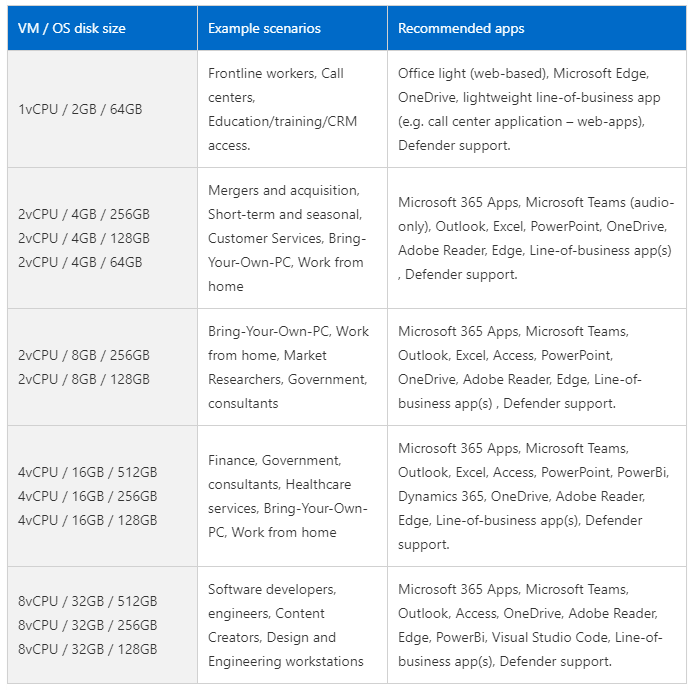Rumors about a new cloud-powered Windows by Microsoft circulated for quite some time. Microsoft put an end to the rumors with today’s announcement of Windows 365 Cloud PC, a “hybrid personalized computing” experience.
The core difference between regular versions of Windows and Windows 365 is that the latter is streamed from the cloud, in this case using Microsoft Azure. Personal settings, files, programs and content is streamed from the cloud to any device that supports Windows 365 Cloud-PC.
Since it is cloud-based, Windows 365 supports different device types and operating systems. Windows desktop systems are best suited but users may also use Windows 365 from Android and iOS devices, Mac OS devices, and web browsers.
Here is the full feature matrix of Windows 365
| Windows desktop< | Store client | Android | iOS/iPadOS | macOS | Web> | |
| Keyboard | X | X | X | X | X | X |
| Mouse | X | X | X | X* | X | X |
| Touch | X | X | X | X | X | |
| Serial port | X | |||||
| USB | X | |||||
| Teams AV Redirection | X | |||||
| Multi-media redirection | Coming soon | |||||
| Multi-monitor | 16 monitors | |||||
| Dynamic resolution | X | X | X | X | ||
| Screen capture protection | X | |||||
| Cameras | X | X | X | X | ||
| Start menu integration | X | |||||
| Clipboard | X | X | Text | Text, images | X | text |
| Local drive/storage | X | X | X | X | ||
| Accessibility | X | |||||
| Location | X | |||||
| Microphones | X | X | Coming soon | X | X | In preview |
| Printers | X | X (CUPS only) | PDF print | |||
| Scanners | X | |||||
| Smart Cards | X | X | ||||
| Speakers | X | X | X | X | X | X |
Microsoft highlights advantages of Windows 365 over regular installations of Windows on local systems. Among the advantages are decreased costs, less environment complexity, personalized desktop experiences regardless of device used by a worker, scaling, fast provisioning and deployment (in minutes)
Windows 365 will be available on August 2, 2021. Different packages are available that range from single virtual CPU systems with 2 Gigabytes of RAM and 64 Gigabytes of storage space to 8 virtual CPUs with 32 Gigabytes of RAM and 512 Gigabytes of storage space. No information on graphics processing units are provided at this point.
A test base for Microsoft 365 is now in public preview.
Check out the table below to see which packages are available. Microsoft lists example scenarios and recommended applications for each.

Pricing, per-user, has not been revealed yet by Microsoft.
Windows 365 is designed for Enterprise customers only at this point. The technical requirements are listed below:
- Microsoft Azure subscription (subscription owner)
- Microsoft Azure Virtual Network (vNET) subscription.
- Windows 10 Enterprise E3 + EMS E3 or Microsoft 365 F3/E3/E5/BP for users with Windows Pro endpoints.
- Windows VDA E3 + EMS E3 or Microsoft 365 F3/E3/F5/BP for users with non-Windows Pro endpoints.
- AD must be in sync with Azure AD to provide hybrid identity in Azure AD.
- Microsoft Intune supported licenses: Intune Service Admin.
Microsoft published an introductory video in which it provides detailed information on Windows 365:
Closing Words
Several questions remain unanswered at this point. Besides pricing, Microsoft did not reveal information about the service’s availability or backups.
Windows 365 is a cloud-based operating system that is designed for the Enterprise. Office 365 started as an Enterprise service at first as well before it was rebranded to Microsoft 365 and opened for small business customers and consumers. Microsoft could have similar plans for Windows 365, but marketing would highlight different advantages if launched for small businesses and end users.
Now You: what is your take on Windows 365? Will we see a “home” version eventually?
Thank you for being a Ghacks reader. The post Microsoft unveils its “Cloud PC” service Windows 365 appeared first on gHacks Technology News.
